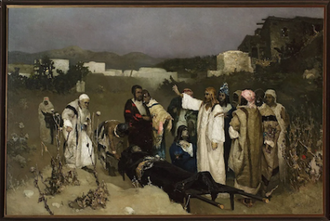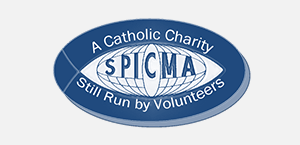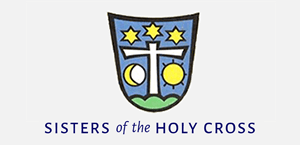Gospel in Art: The resurrection of the son of the widow of Nain

The resurrection of the son of the widow of Nain, Wilhelm Kotarbinsky © National Museum, Warsaw
Source: Christian Art
Gospel of 19 September 2023
Luke 7:11-17
Jesus went to a town called Nain, accompanied by his disciples and a great number of people. When he was near the gate of the town it happened that a dead man was being carried out for burial, the only son of his mother, and she was a widow. And a considerable number of the townspeople were with her. When the Lord saw her he felt sorry for her. 'Do not cry' he said.
Then he went up and put his hand on the bier and the bearers stood still, and he said, 'Young man, I tell you to get up.' And the dead man sat up and began to talk, and Jesus gave him to his mother. Everyone was filled with awe and praised God saying, 'A great prophet has appeared among us; God has visited his people.' And this opinion of him spread throughout Judaea and all over the countryside.
Reflection on the painting
Our canvas today was painted by Polish artist Wilhelm Kotarbinsky in 1879. Son of an impoverished Polish nobleman, he went to Italy to learn how to paint, and then ended up in Russia, where he built up a very strong career in painting, based mainly in Kiev. He was a Catholic and always took great care and interest in painting huge genre scenes (our painting is 222cm. wide; 7 feet) where religious subjects were portrayed in landscapes which somehow felt familiar to the viewers, thus placing them right into the midst of the depicted events.
In the foreground we see some dead thistles. Edible thistles such as the ones shown here were known as a dish of the poor and so in painting they symbolise poverty and pain. Being a tough plant, the thistle grows everywhere other plants usually don't. It stands for surviving where others won't. But here in our painting the thistles are dead, reflecting the state of the son of the widow of Nain. Her son was truly dead, not just ill or sick. Both thistles and the dead son are part of the left half of the painting. By contrast, in the right half, Jesus is set against a green, healthy, fertile, grassy ground. He is resurrecting the dead man. Even the thistles on the right side of the painting show life and look much healthier. Jesus is depicted in the middle of performing his miracle… not because he was asked to, but simply because 'he felt sorry' for this widow.
The beauty of this story lies in Jesus' compassion towards the widow. The Lord sees us with eyes of compassion, too. Jesus once told a parable in which it is said of one of the characters that 'he saw and had compassion'. It was the Samaritan who saw the broken Jewish person by the roadside and had compassion. The Samaritan in the story behaves in the way that Jesus behaves in real life, with compassion. His way of seeing us also calls on us to see others with his compassionate eyes.
LINKS
Gospel in Art: https://christian.art/
Today's reflection: https://christian.art/daily-gospel-reading/luke-7-11-17-2023/


















